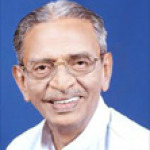Obituary of Jesus, dead, buried and alive

Jesus of Nazareth, Whose Messianic Message Captivated Thousands, Dies at About 33
(Note: One never gets tired of listening to Jesus’ story retold becauses it isall about the only historic person who died young and yet lives on for ever like the sun in the sky. Just think of the unbelievable person he was and the things he did! He had no formal education nor did he leave a single line in writing, yet the words of wisdom he spoke are still indelibly written in the minds of the nations of the world. He is reported to have lived only 33 years, just three years only in the glare of publicity, 18 years in total obscurfity and 12 years under parental toutilege, reported once only for his childish pranks — running away from parental gaze and creating panic at home. And people continue to reel out stories about him like: Called prince of peace he asked his followers to buy swords, referred to  as the only son but also as the eldest of at least six siblings, including four brothers—James, Joseph, Judas, and Simon—and several sisters. These and other things makes his the Greatest story ever told. james kottoor, editor)
as the only son but also as the eldest of at least six siblings, including four brothers—James, Joseph, Judas, and Simon—and several sisters. These and other things makes his the Greatest story ever told. james kottoor, editor)
Sam Roberts, an obituary writer for The New York Times, imagines how, given the facts available then, his predecessors might have reported the aftermath of an execution in the Middle East one Friday two millennia ago.
Sam Roberts
Jesus of Nazareth, a Galilean carpenter turned itinerant minister whose appeals to piety and whose repute as a healer had galvanized a growing contingent of believers, died on Friday after being crucified that morning just outside Jerusalem, only days after his followers had welcomed him triumphantly to the city as “the anointed one” and “the Son of David.” He was about 33.
For a man who had lived the first three decades of his life in virtual obscurity, he attracted a remarkable following in only a few years.
His reputation reflected a persuasive coupling of message, personal magnetism, and avowed miracles. But it also resonated in the current moment of spiritual and economic discontent and popular resentment of authority and privilege, whether wielded by foreigners from Rome or by the Jewish priests in Jerusalem and their confederates.
Still, Jesus had been preceded in recent years by a litany of false messiahs. He followed a roster of self-styled prophets who promised salvation and, with their ragtag followers from separatist sects, cults, and fractious rebel groups, were branded as bandits by the governing Romans, ostracized by the ruling priests as heretics in a period of pessimistic apocalyptic expectation, and already lost to history.
Despite the throngs that greeted him in Jerusalem and applauded his daring assault on the Temple and his attack on the money changers who operate within its precincts with impunity, it is arguable whether the legacy of this man—whom some contemporaries dismissed, if guardedly, as “the one they call Messiah”—will be any more enduring or his followers any more committed than the prophets and their devotees who preceded him.
Jesus seems to have been universally respected as a wise man whose appeal for mercy, humility, and compassion reverberated powerfully. But he left no written record, and, according to those who heard him, he sometimes preached mixed messages. He would bless the peacemakers, but also suggest that his followers buy swords. He would insist that his mission was solely to minister to “the lost sheep of the house of Israel,” but would also direct his devotees to proselytize to other nations.
Even less is known about Jesus’s youth. He was born Yeshua bar Joseph (his very name, “Yahweh saves,” or freedom, after Joshua, could be considered incitable), in all likelihood in Nazareth (he was known as “the Nazarean”). Some adherents, however, insist that he was born in Bethlehem, a claim that would polish his bona fides as an heir to King David.
His father was named Joseph, although references to him are scarce after Jesus’s birth. His mother was Miriam, or Mary, and because he was sometimes referred to as “Mary’s son,” questions had been raised about his paternity.
He is believed to have been the eldest of at least six siblings, including four brothers—James, Joseph, Judas, and Simon—and several sisters. He never married—unusual for a man of his age, but not surprising for a Jew with an apocalyptic vision.
His survivors include his mother, his brother James, and a number of other siblings.
His family was devoutly Jewish, probably one of a hundred or so Jewish families in a windswept, mostly mud-and-brick hilltop village in lower Galilee populated largely by peasants and laborers. Although it is only an hour’s walk from cosmopolitan Sepphoris, the Nazareth in which he was born still remains unidentified on most maps, an indication of its insignificance.
Jesus spoke Aramaic, probably with a smattering of Hebrew and Greek, but although Nazareth had a synagogue, there is no record of his having had access to a formal education.
He grew up in a turbulent time. King Herod the Great had managed to pacify rival groups of Jews, Arabs, Greeks, Samaritans, and Syrians on behalf of the territory occupied by Rome for nearly six decades. But Herod’s death, roughly the same year that Jesus was born, and the completion of the Temple in Jerusalem contributed to mass unemployment, which further widened the gap in economic inequality that Jesus would witness growing up.
In his late 20s, Jesus was drawn to an ascetic preacher named John, who initiated his followers into what he believed was the true nation of Israel. According to John’s custom, they repented their sins and purged their impurities in the Jordan River, an immersion ritual commonly known in Hebrew as a mikveh and transliterated from Greek as baptisma.
Jesus was baptized shortly before John the Baptist’s explosive popularity rattled the skittish Romans, who arrested and executed him.
Even before that, though, Jesus had begun his own ministry, referring to himself as rabbi or teacher, citing the scriptures, which suggested he was literate, but also speaking in original parables.
He was accompanied eventually by a dozen disciples, mirroring the 12 tribes of Israel. He was unusually receptive to women, and forgiving to sinners (those who flouted God’s commandments rather than priestly rituals) and even to reviled tax collectors (despite his anti-establishment rhetoric, he acknowledged the right of Rome to collect taxes).
His following, of mostly Jewish and Greek heritage (he even converted contemptuous Samaritans) grew as word of the miracles he had performed spread before him.
These miracles mirrored those performed by earlier Jewish prophets in the Hebrew Bible, although Jesus was said by his followers to have outdone his predecessors. Elijah, in one instance, was said to have employed three prayers and some theatrics to raise a child from the dead; Jesus reputedly did it with just a word. Elisha, in another, was said to have fed 100 people with 20 barley loaves; Jesus was credited with feeding 5,000 with 5 loaves.
Supported largely by the hospitality of benefactors in Capernaum, on the Sea of Galilee, Jesus avoided large cities on his pilgrimage of preaching, which culminated last week in his arrival in Jerusalem.
It is believed that he timed his arrival to occur on the eve of Passover, when the city’s population swells to celebrate a holiday rife with contemporary symbolism: the Jews’ salvation from foreign subjugation.
After running afoul of the Jewish elite in Jerusalem for blasphemy and his arrest on Thursday, Jesus was sentenced to death by Governor Pontius Pilate. (The Jewish authorities lacked jurisdiction to impose capital punishment.) The charge, in effect, was treason, for claiming to be King of the Jews or “the anointed one” (Messiah in Hebrew and Aramaic; Christos in Greek).
After he was declared dead on Friday night, he was buried nearby in a cave. On Sunday, his disciples reported that the body was missing.

















